A few years ago, Graham Smith of St. Andrews University devised a way of deliberately adding a HE12 components to the starndard HE11 mode formed at the throat of a corrugated horn and then - with a phasing section - allowing the two modes to come into phase. In principle it is possible to move from 98% of the power in the fundamental mode in a standard corrugated horn to something like 99.88%.

In this cross section, the profile section generated the HE12 mode, and the parallel section brings it into phase with the HE11 mode
Soe Min Tun of SMT Ltd has devised an addition to his CORRUG program to help us design such "Ultra Gaussian", giving the amplitude and phase of the HE1n and EH1m mode sets, to allow computational adjustments to be made
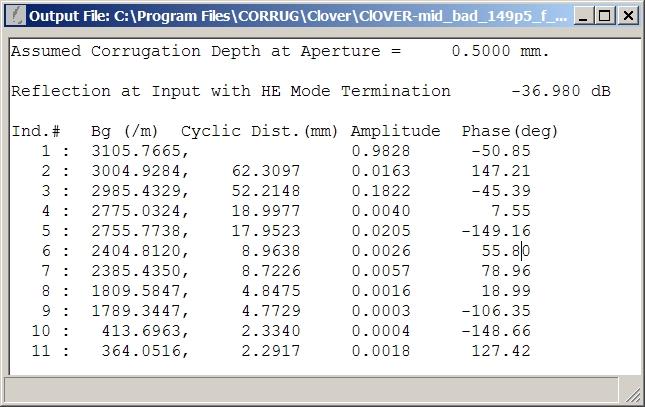
and many of our horns now are designed and made on this basis (although they are slighly more expensive to produce). It is worth noting that the standard formula for determining the beamwidth from the aperture radius viz w = 0.6435 a does not apply, and the formula is closer to w = 0.5 a. So the horns are slighly less efficient in this regard.

This advance is more important than just a nice antenna pattern: In particular, in complex Quasi-optical systems, where feed horns are coupled together, higher order Gaussian modes - albeit small in amplitude - can come together to cause unpleasent and unwanted resonances which set Graham looking down this path. The provision of such horns simplifies - both conceptually and at the practical level, the design of Quasi-Optical Circuits, but returning to centre-stage the simple Gaussian Beam-Mode Approach.

HiPER requires the low resonances provided by the use of such
Ultra-Gaussian Horns
For more details, consult ![]() on the benefits of adding HE12 modes.
on the benefits of adding HE12 modes.
These horn do perform as predicted. Here are some E&H plate patterns from a horn made for a CATR supplied to BUPT in Beijing, kindly measured at QMUL. A detailed report on a range of horn measurements is available
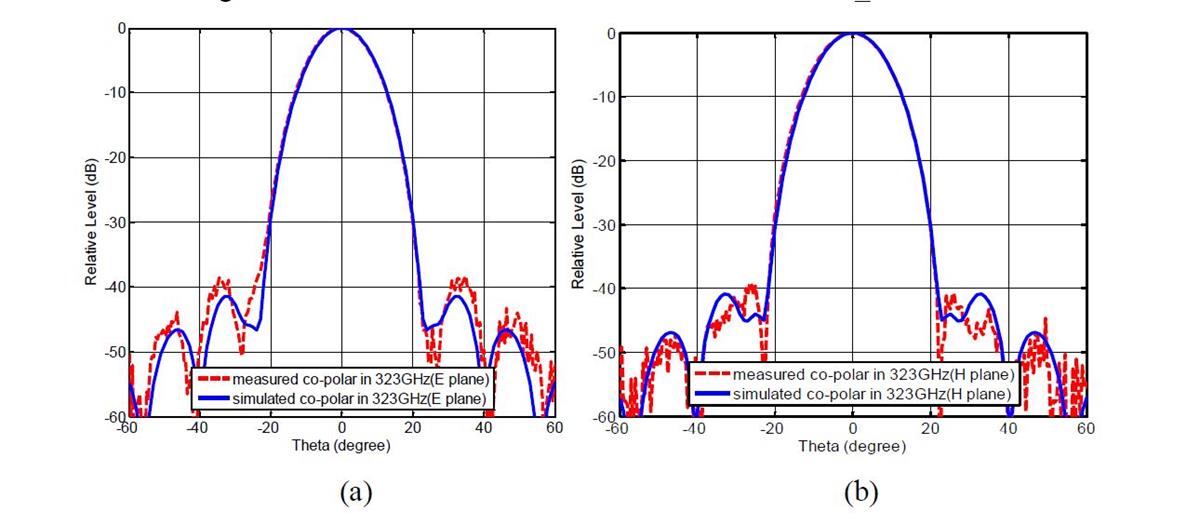
Measurement of feed for AIRBUS in Ottobrunn
A set of TK designed and manufactured Ultragaussian feed measurements are presented here covering bands 50-75, 75-110 and 140-220 GHz, kindly measured by colleagues at the AIRBUS Ottobrunn antenna facility.
Measurements of STEAM-R Feed Horns
Measurements performed by Axel Murk, Mark Whale and their colleagues at the IAP, Bern on a set of 340 GHz Ultragaussian horns can be seen below, showing very good match between predictions and measured results, over a wide fequency range.
(ie these Ultragaussian horns do not suffer from the narrow bandwidth suffered by Potter or Pickert horns)
More information about STEAM-R - sadly now not proceeding - can be found on the multi-beams optics.
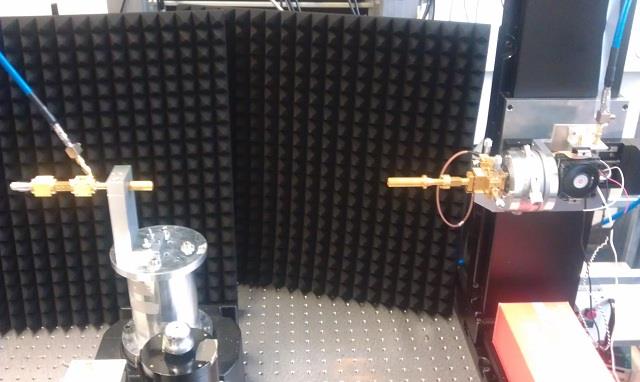
The following three pattern show the measured performance against the CORRUG model.
323 GHz

340 GHz
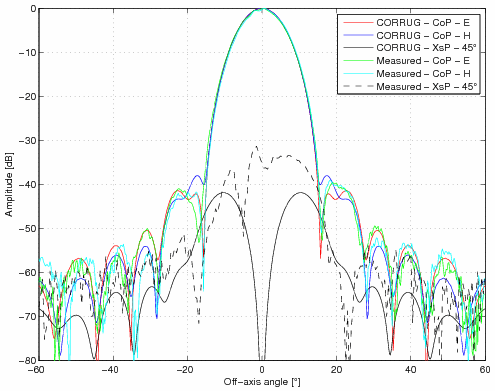
357 GHz
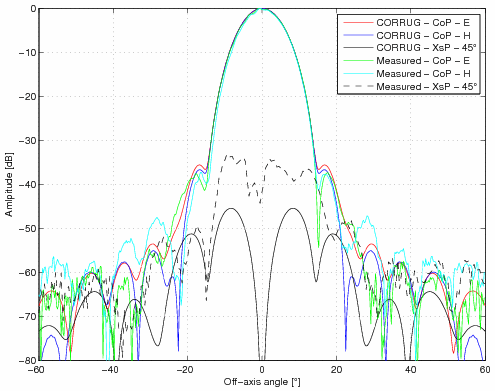
(Higher than predicted cross-polar may very well be a measurement artefact.)
The following plot gives the S11 performance of this horn as a function of frequency:

Our Ultra Gaussian horns cover a full waveguide band - with optimum performance found, as one might expect, in the centre of the band. Below are measurements kindly made by
